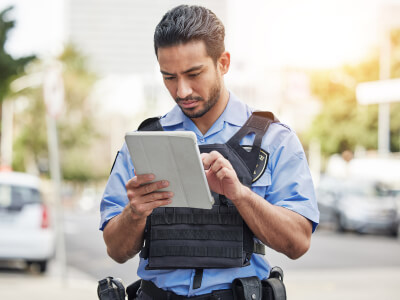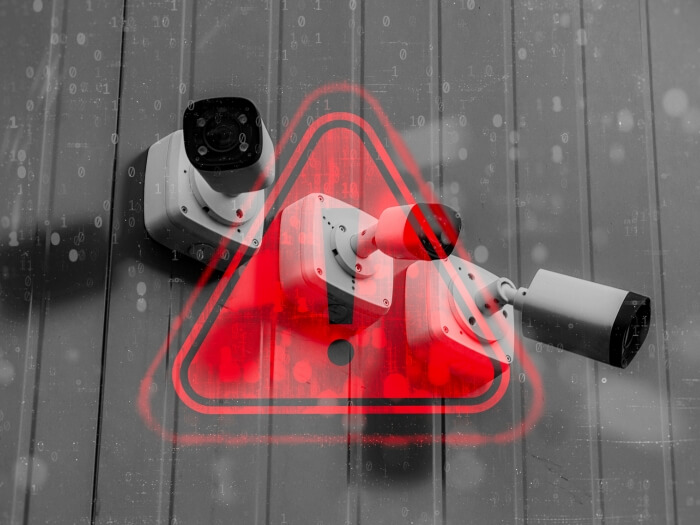
For decades, the primary goal of a video surveillance system was clear: record, document, and review. If an incident occurred — a break-in, a liability claim, or an accident — the footage was there to be scrutinized, documented, and handed over to authorities. This is the essence of forensic video security, and it remains an essential pillar of any security strategy.
There’s nothing wrong with forensic security; in fact, it’s the classic, foundational reason for having cameras in the first place. It provides irrefutable evidence for investigations, audits, and dispute resolution. However, focusing only on forensics means your security strategy is inherently reactive. You’re gathering evidence of a past event, not preventing an event in the first place.
Today, modern cloud video platforms, like the Eagle Eye Cloud VMS (VMS), allow organizations to pivot from a reactive, forensic-first approach to a proactive strategy — one focused on prevention, real-time response, and mitigating damage before it spirals out of control.
The power of proactive security
Proactive security leverages advanced technology, primarily artificial intelligence (AI) and real-time analytics, to turn cameras into intelligent assets rather than passive sensors. Instead of simply recording, the system actively watches for specific patterns and anomalies, automatically alerting staff or even authorities the moment an incident begins to unfold, or even when a threat is merely approaching.
This shift is crucial, particularly in dynamic, high-consequence environments where mere seconds can be the difference between a near-miss and a disaster.
A proactive system is defined by its ability to provide real-time detection and alerts while meticulously managing the data to prevent false alarms. Eagle Eye Networks cloud solutions offer several powerful examples of this proactive approach:
- Property perimeter detection: Using AI to detect people or vehicles at the edge of a property before they get inside. This gives security teams valuable lead time to respond.
- Real-time license plate recognition (LPR): Automatically identifying vehicles of interest, such as those associated with previous incidents, the moment they enter a property.
- AI-based detection: This includes specialized tools like AI-based gun detection, which can rapidly identify a firearm on camera and trigger immediate alerts to initiate lockdown procedures or contact emergency services.
Expanding the definition of security
Proactive video surveillance actually means coverage that extends beyond traditional threats to include broader safety and operational elements, because these things can be well orchestrated through the VMS. While these used to be supplementary, they’re increasingly just another element to a unified security system tied together with video:
- Two-way audio integration: Using cameras connected to a VMS to play audio that can deter a vandal or intruder in an unpopulated area — effectively “scaring them off” using a video-driven trigger.
- IoT sensor monitoring: Integrating non-video sensors (like fire, humidity, or temperature monitors) into the VMS to consolidate monitoring and instantly alert staff to a hazard.
- Advanced notification and automation capabilities: The abilities mentioned above that AI can provide — like detecting vehicles or unlocking doors based on faces — shouldn’t happen in a vacuum. Instead, notifications help users understand the ways that their AI is actually saving them time and energy. And whenever it makes sense, detected events (positive or negative) can trigger intelligent next steps, whether that means opening a gate to admit a delivery or activating a warning light.
The best of both worlds
It’s important to remember that these two strategies aren’t mutually exclusive. Every time a proactive system detects a threat — whether it’s a car entering a restricted zone or a person walking where they shouldn’t be — it is simultaneously performing its forensic duty by recording the event.

Furthermore, proactive tools like the Eagle Eye 911 Camera Sharing feature blend both strategies seamlessly. This feature automatically provides first responders with access to a customer’s live, on-premises camera feeds during a verified emergency, making an immediate, life-saving difference. This is the ultimate synthesis: the foundational forensic recording is immediately put to proactive use by sharing it with those who need it most, in real time.
By leveraging AI and the cloud, organizations can maintain robust forensic documentation while gaining the immense, life-saving, and asset-protecting advantage of a proactive security posture.

Timothy Lord has witnessed and written about IT security trends and the ongoing evolution of SaaS for more than 25 years.
あなたに興味があるかもしれない他の投稿

Breaking the chains: How Templeton USD escaped the “Hostage-as-a-Service” security trap
Templeton initially implemente…
12月 2, 2025
Louvre lesson: Security is a complex, not only a process
Last month's news footage coul…
11月 28, 2025




